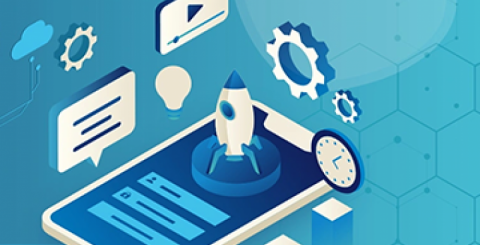What is the Cost of Mobile App Development?

The cost of developing apps is a function of several factors varying over several geographies globally. In Mobile App Development there are several types of apps with many already in the app stores. These factors will vary from: app complexity, type of platform it is built for, cost of the development team, app maintenance cost, scalability, integrated technology, features and functions, safety and security integrated, etc. The more sophisticated and functional features integrated into the app the more costly the apps are bound to be. Though it’s hard to put practical figures or exact app development costs, there are pointers that help give approximate across geographies.
Types of Apps and their Development Costs
Since there are several types of apps from simple, standard and complex so are the costs related to their development: The app types are:
Simple Apps
With simple apps, the extra high-end app development is lacking and so are their capabilities limited to very simple and basic tasks. Simple apps revolve around essential features, low-tech resolution screens, and vital user interface (UI) adaptation.
Costs with simple are very standard or low given the few functions and features and the time taken to develop the applications.
Gaming Apps
Costs with gaming apps are also subject to their high level of finesse in UI graphics and other adapted technologies like virtual reality (VR) that avail a higher level in the gaming experience. Besides character animations and high definition visuals (images, videos, and text) enhance gaming apps costs.
Business Apps
Business apps are a diverse mix as the businesses are and cut across retail chains, banking, insurance, logistics, etc.
Complex Apps
They have a high level of technology integration and adaptation that means extra costs in the app development process. From APIs, UIs, emerging technology, multiple features and functions, HD graphics, animations and visuals with faster processing speeds and synchronization across platforms. These may include online gaming real-time webcasting, live streaming, etc.
Factors that Affect Cost Mobile App Development
a). App Complexity
Even within the complexity sphere, there will be several levels and layers of technology and software integration that will affect the total app development cost. From simple, standard to highly complex levels there are different integrations that impact the app development cost.
b). Supported Mobile Platforms
From native to cross-platform mobile apps there are distinct and unique capabilities that come to both types of apps but also the costs involved. For instance, iOS and Android apps may cost different depending on geographies, integrated technologies, and software, etc.
c). App Functions and Features
Perhaps what makes UI design and enhance UX are the features and functions. Users or target markets will fall in love with the app based on its ability and capacity to excite them on an interactive level.
d). Graphics and HD Visuals
App visuals and graphics have a highly interactive and attractive impact in an app's UI design. Adding some of these UI features in apps may lead to higher app development costs. When the user interface has a lot of features to run there must the integrated technology and software to run them seamlessly.
e). Integrated Third-Party Software
At the initial level of the app development process, this is the fundamental question to address. Native and cross-platform apps are built with different integrations that can determine the actual app development cost in the end.
f). High Capacity Hardware Technology Integration
Today, especially for gaming and other interactive apps features developed for specific purposes like HD photography, HD videography, HD live streaming, web-based broadcasting, advanced navigation, VR, AR etc. the technologies require supporting apps with an inbuilt capacity to run or integrate the technologies.
g). Post Development App Maintenance
An apps proper maintenance and functioning are all dependent on a pre-signed maintenance plan that is meant to ensure apps function in a tip-top condition free from bugs, viruses, malware or outdated technology. That too determines an apps development cost.
h) Geographies and Global Locations
With the advent of outsourcing in app development on a large scale, different global locations and regions have a significant impact on the development process according to minimum rates per hour.
Vitals in Estimating App Development Cost
a). Overall app design costs
b). Architecture
c). Backend
d). Security
e). Validation, Testing
f). Quality Assurance and Launch
h). Maintenance and Regular Update
The app development process is a function of these and other factors depending on geographies and the types of apps being developed for the specific target markets.
Conclusion
Knowing the type of app being developed its features and functions and other integrated technologies is crucial to determining its development cost. That’s why a competent Mobile App Development Company with an MVP develops an app prototype to gain a full-scale functional app. How much does an app cost is subject to many answers depending on the type of app being made and its target market? These factors will shift globally according to the industry dynamics.
Similar Articles
Ultrasonic cleaning is a powerful, non-invasive method for removing contaminants from surfaces. Using high-frequency sound waves, ultrasonic cleaners create microscopic bubbles that implode upon contact with dirt, oils, or grime, effectively lifting them off.
When we think about efficient transportation within large buildings or crowded areas, we often imagine escalators or elevators. However, there’s another key player in the world of horizontal transportation: moving walkways.
Discover 6 essential IT security policies to protect your organization from cyber threats. Build a robust, compliant, and secure infrastructure today!
Nowadays, the IT world is not imaginable without the cloud. It is extremely difficult to replace the cloud because the technology is bound to evolve. In this constantly changing technology world, nothing can be forecasted. Nevertheless, the cloud has deployed itself in such a way that has become irreplaceable.
A Data Management Platform (DPM) can be defined as a smart assistant that collects data or information from various places, such as websites, apps, and customer databases. A detailed description of the customers is then generated, which contains information about their preferences and behavior
Software testing is imperative to the software development lifecycle, typically ensuring that applications work as intended and fulfill user expectations. Test Data Management (TDM) has become a rather crucial aspect of effective software testing.
It has been amply evident that there is a keen focus on delivering quality software products quickly. Here, DevOps emerges as an effective solution to meet such market demands. After all, it enables organizations to accelerate software delivery while improving business outcomes.
Many factors have driven the transformation of the world around us. Yet, the credit primarily goes to digital technologies. This much has been for everyone to see. This transformation has been fueled by advances in AI and cloud computing, among other novel technologies.
We all know that organizations now collect massive amounts of data from a variety of sources every single day. It is also widely accepted with proper management, this data can become an asset. Yet, some companies may struggle to keep pace with data's growing volume and complexity









